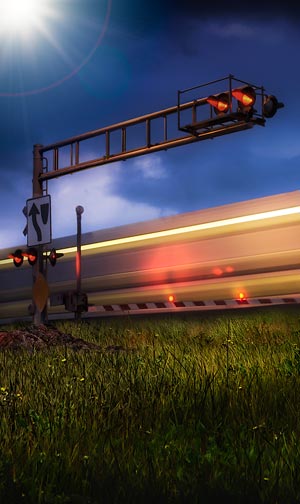Minnesota Dump Truck Driver Hospitalized after Collision with Train at Dangerous, Unguarded BNSF Crossing
(St. Cloud, Minnesota – July 31, 2017)
A 26-year-old local resident was admitted to a local hospital after his dump truck was struck by a BNSF freight train. The collision occurred at a dangerous and unguarded private crossing near Highway 10 and 32nd Street, SE in St. Cloud, MN at about 7:45 A.M., CDT last Monday morning.
Allen Keene was the driver injured in this collision. His truck was hit and knocked into a live electrical power pole, necessitating a shutdown of the main thoroughfare for more than two hours. Minneapolis Star-Tribune Reporter Paul Walsh indicated that the Sherburne County Sheriff’s Office reported that debris from the auto-hauling train/dump truck collision also caused damage to two semi-trailer trucks and three passenger vehicles which were traveling on the closely-parallel Highway 10.
“Authorities have yet to explain the circumstances involving the collision,” wrote Walsh, who noted that “The crossing has stop signs and (standard, passive railroad) crossbucks, but no gates with arms,” (or flashing lights, either) according to St. Cloud Times Reporter Nora Hertel.
The FRA’s railroad crossing website says that a daily average of 48 BNSF freights and Amtrak passenger trains cross the BNSF double-tracked crossing which so closely parallels Highway 10 that it is physically impossible to safely fit a semi-trailer dump truck between the tracks and the multi-lane highway, making the crossing especially dangerous due to trains approaching at maximum allowable speeds of 75 mph. It is virtually certain that if this crossing was protected by active warning devices, this collision and the eight before it would not have occurred. Both BNSF and Operation Lifesaver all know that lights and gates are the most effective type of protection at railroad crossings. Studies that have been conducted over fifty years ago confirm that lights and gates offer the ability to drastically reduce the number of vehicle/train accidents by as much as 96%.


